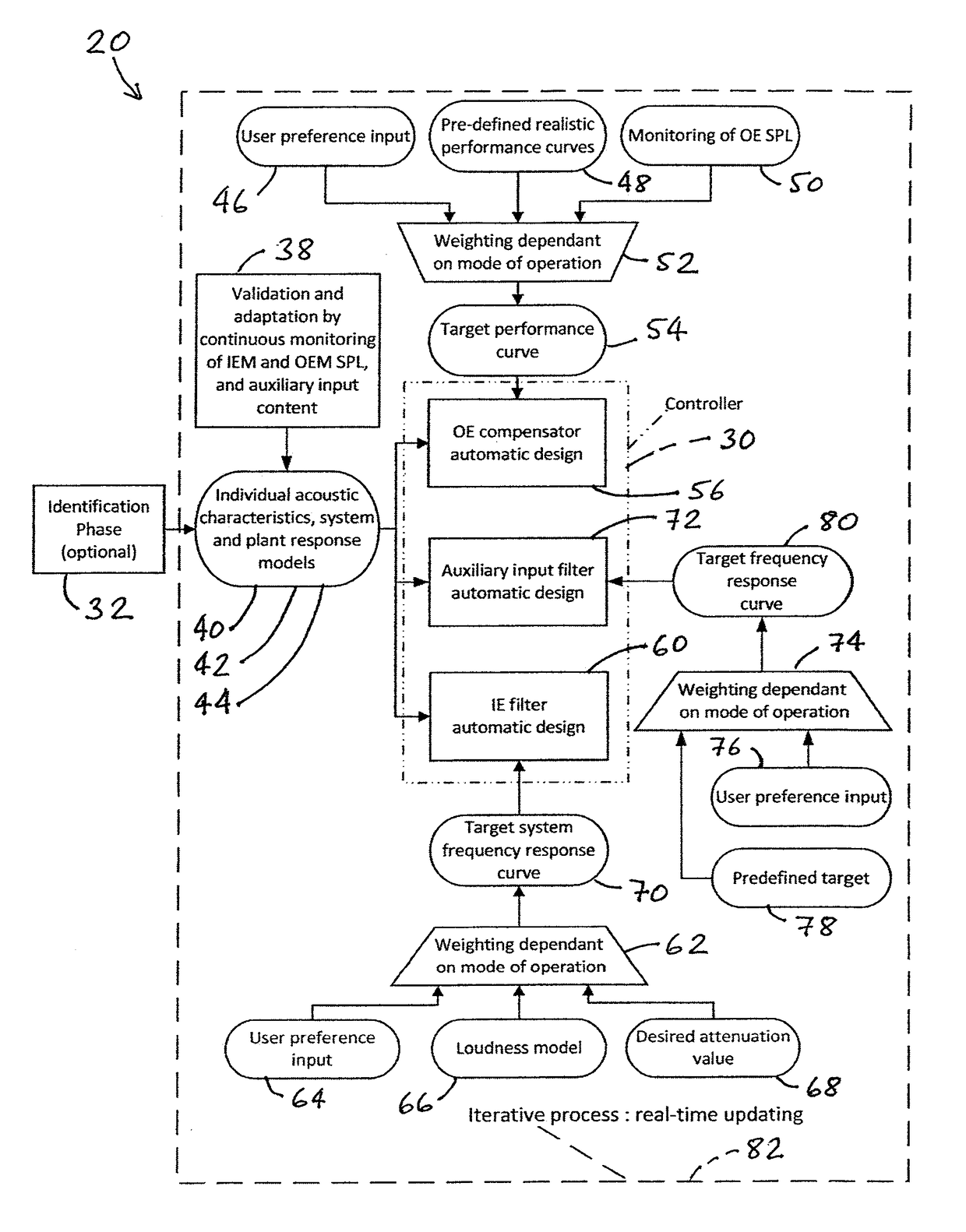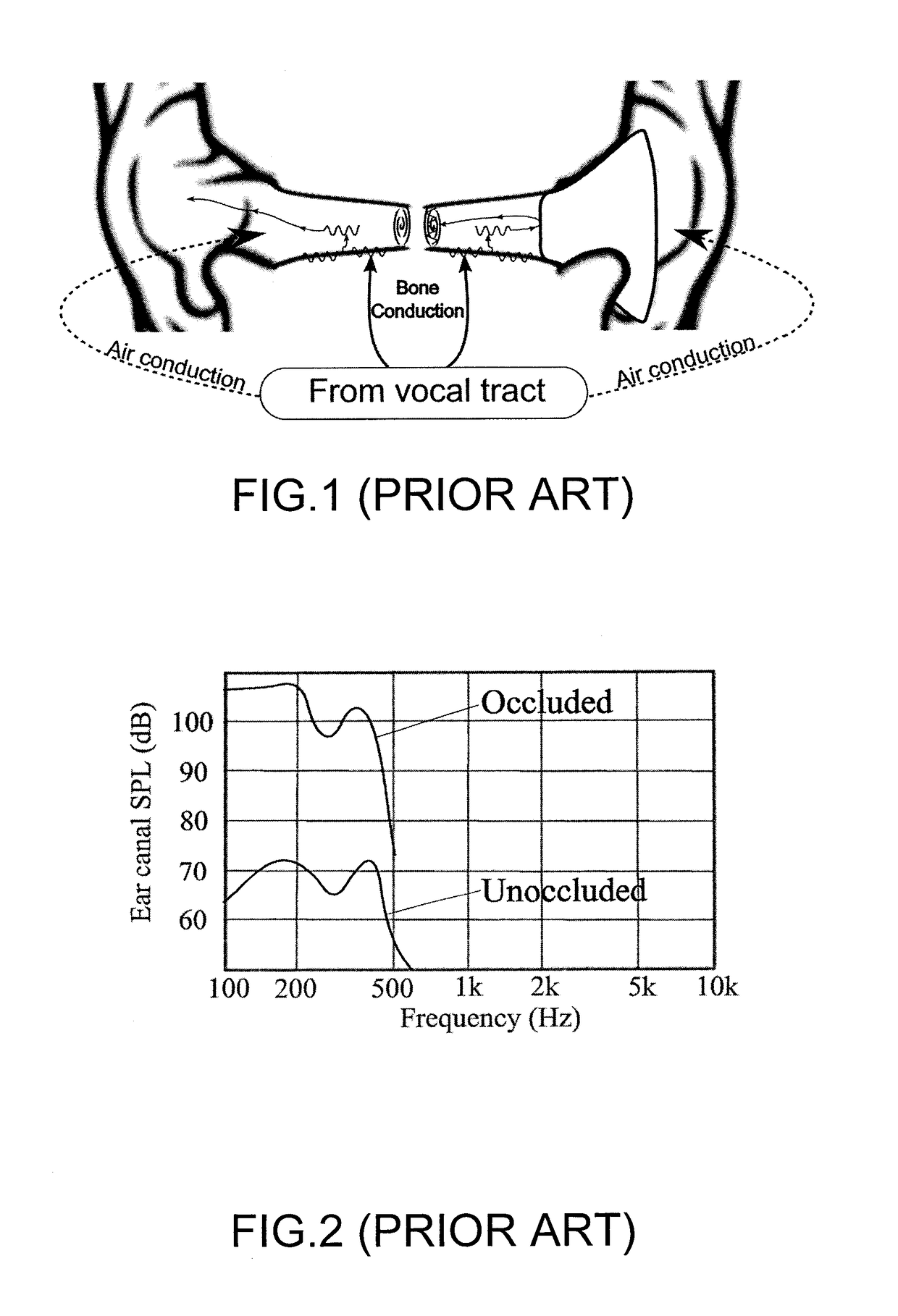Active hearing protection device and method therefore
a hearing protection device and active technology, applied in the direction of ear plugs, earmuffs, microphone structural associations, etc., can solve the problems of high unfavorable auditory perception of musicians, isolation and occlusion effects, and musicians' hearing not being protected, so as to improve performance, not over-attenuate the signal, and improve the effect of sound
- Summary
- Abstract
- Description
- Claims
- Application Information
AI Technical Summary
Benefits of technology
Problems solved by technology
Method used
Image
Examples
Embodiment Construction
[0065]With reference to the annexed drawings the preferred embodiment of the present invention will be herein described for indicative purpose and by no means as of limitation.
[0066]As a solution to the above-mentioned effects, a HPD (hearing protection device) 20 incorporating active noise control of the occlusion effect (OE) and compensation algorithms to the isolation effect (IE) in accordance with an embodiment of the present invention is needed. Furthermore, it is required that such a HPD 20 adapts to its user.
[0067]The OE and IE actually experienced can vary greatly across users and is largely dependent on their individual acoustic characteristics 40, which is an umbrella term for factors including but not limited to: the shape of their external ears including the ear canal 10 and the acoustical properties of their open and occluded ear canal, dependent on its shape, length, stiffness, eardrum 12 impedance.
[0068]Since the different acoustic characteristics across users cause s...
PUM
 Login to View More
Login to View More Abstract
Description
Claims
Application Information
 Login to View More
Login to View More - R&D
- Intellectual Property
- Life Sciences
- Materials
- Tech Scout
- Unparalleled Data Quality
- Higher Quality Content
- 60% Fewer Hallucinations
Browse by: Latest US Patents, China's latest patents, Technical Efficacy Thesaurus, Application Domain, Technology Topic, Popular Technical Reports.
© 2025 PatSnap. All rights reserved.Legal|Privacy policy|Modern Slavery Act Transparency Statement|Sitemap|About US| Contact US: help@patsnap.com



